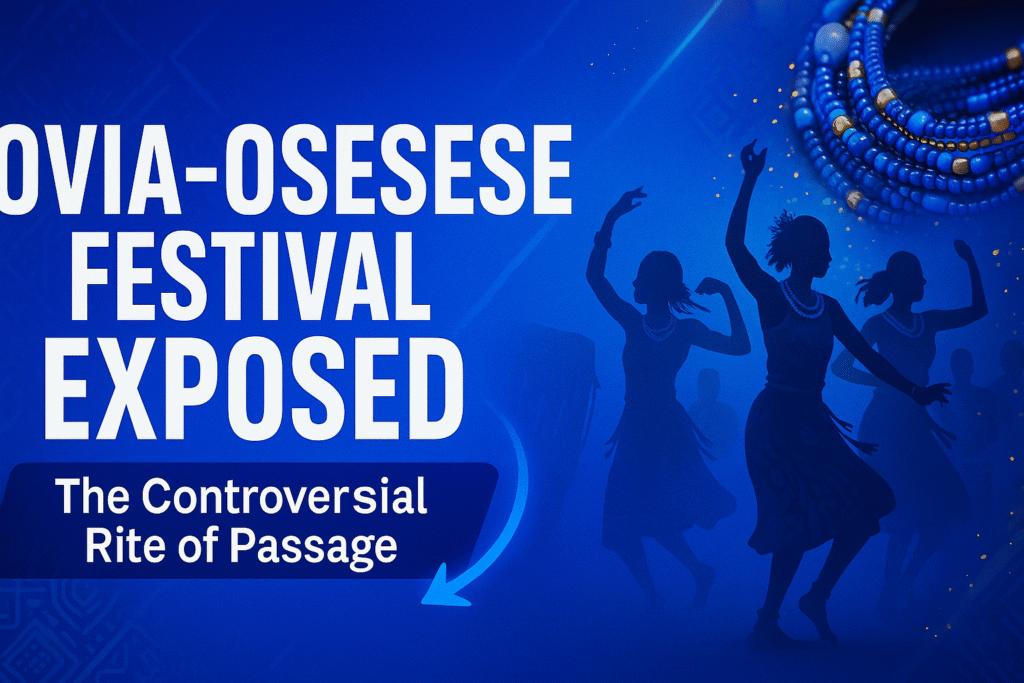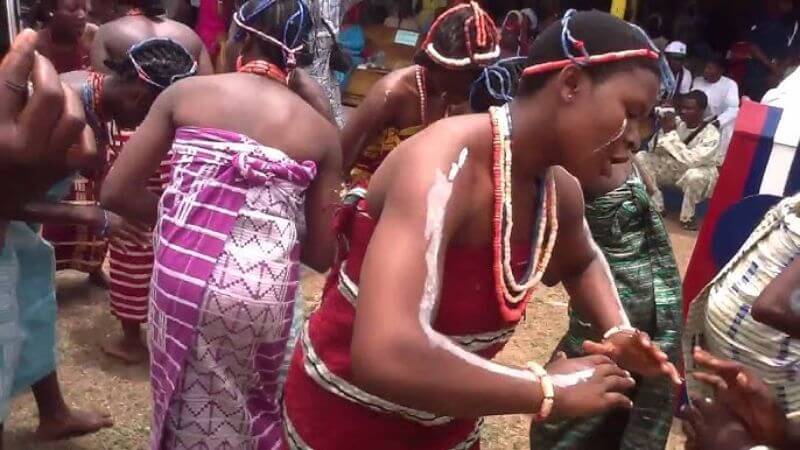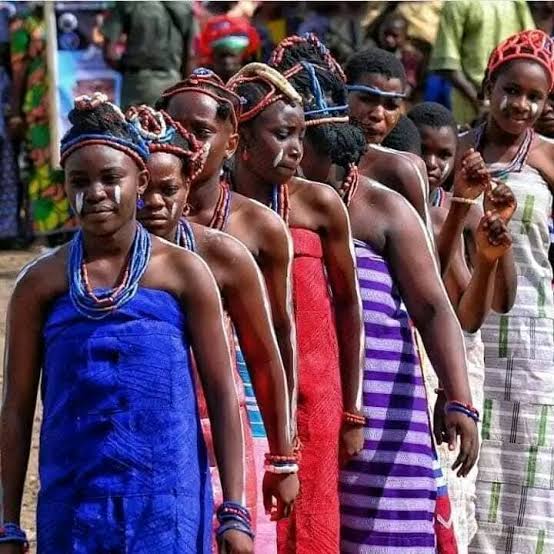Ovia-Osese Festival Exposed: The Controversial Rite of Passage
In the lush hills of Ogori in Kogi State, Nigeria, a week of color, drums, and careful instruction leads girls into recognized womanhood. This is the Ovia-Osese festival, a living tradition that blends community pride with lessons for life. It’s beautiful, it’s complicated, and yes—sometimes, it’s controversial. (Background: annual rite of passage in Ogori, Kogi State.)
A Quick Primer: Place, People, and Purpose
Ogori is a small, close-knit community in Kogi State. For generations, families have gathered to celebrate their daughters’ transition to adulthood. At its heart, the Ovia-Osese festival is a structured rite of passage: a public moment that says, “You’re ready—socially, morally, and culturally—to take on adult responsibilities.” The event helps pass on norms, language, songs, crafts, and a sense of belonging that ties one generation to the next. (Purpose and community role.)

When Does It Happen?
Locals commonly schedule the celebrations around late April or early May, often about two weeks after Easter. In recent editions, activities have run for roughly a week, with parades, dances, and a formal presentation of the maidens before elders and guests. (Scheduling pattern and recent dates.)
Origins: How the Rite Began
Elders in Ogori describe the rite as a long-standing institution—older than living memory—designed to mark the passage from puberty to womanhood. Historical and academic notes frame it as both social education and public recognition, with layered symbols, songs, and aesthetics that make the rite memorable and binding for the whole town. (Historical framing and scholarship.)
The Week in Storyform: A Walk Through the Rites
Imagine the town square filling up. Drummers tune skins; aunties fuss over beads; fathers sit straighter than usual. In the days before the finale, the girls are “in camp,” learning from designated mentors (traditionally known as the Iyodina). Lessons may cover hygiene, hospitality, conflict-resolution, small business basics, and respect for elders—practical habits for running a home and standing tall in public life. (Mentorship and content of training.)
On the last day, the maidens step out in coordinated wraps, beads, and distinctive hairstyles. They move in lines, pausing for blessings and greetings, then swing into dance. One signature routine is the Oke dance, performed to drum patterns and chants that mix excitement with a sense of farewell to childhood. (Public appearance and Oke dance.)

What You’ll See and Hear
- Attire: Colorful wrappers (often Aso-oke), layered beadwork, and styled hair.
- Music & Dance: Drum ensembles and call-and-response songs.
- Presentation: The girls appear as a cohort, often in age-mates’ groups, with family members circling proudly.
- Community Roles: Elders, chiefs, women leaders, and cultural custodians offer blessings, give advice, and sometimes present awards. (Visuals and structure of the day.)
Why the Ovia-Osese festival Matters Today
The rite isn’t just about crossing an age line. It’s about reinforcing a shared moral compass and cultural memory. In an era when many communities feel scattered, the Ovia-Osese festival pulls people home—from nearby towns, big Nigerian cities, and the diaspora. It strengthens identity, encourages mentorship across generations, and gives young women a guided moment of recognition. (Cultural impact and diaspora attendance.)
Calendar Snapshot: A Typical Festival Week
| Day | What Usually Happens | Purpose |
|---|---|---|
| Day 1–2 | Arrival, registration, orientation | Set expectations, confirm participants |
| Day 3–4 | Skills & values sessions (mentored) | Practical training + moral guidance |
| Day 5 | Rehearsals, dress fittings, courtesy visits | Prepare for public presentation |
| Day 6 | Cultural displays (music, games, quizzes) | Celebrate language, arts, and history |
| Day 7 | Public procession, dances (incl. Oke dance), blessings | Formal transition; community witness |
(This is a generalized outline synthesizing multiple descriptions; particulars vary year to year.)
Tradition Under Review: What Changed and Why
Over time, some aspects have been toned down or removed to align with modern sensibilities and laws. Organizers emphasize guidance over spectacle, and the instruction phase has become more streamlined than in the past—still symbolic, but less rigid and more educational. (Modern reforms.)
The Debate: Purity, Autonomy, and Public Scrutiny
Public talk around the rite often focuses on sexual purity and the age at which girls participate. Supporters say the festival affirms discipline and community responsibility. Critics say the public emphasis on purity can pressure girls in ways that don’t fit modern understandings of privacy and consent. In the middle are local reformers—teachers, mothers, and youth advocates—pushing to keep the educational core while avoiding practices that could be stigmatizing. (Competing views.)
Women Who Lead: The Mentors and Custodians
Historically, a lead mentor (the Iyodina) guided the girls, with support from mothers and other women. Today, you’ll still see strong female leadership shaping the content of training—part etiquette, part health, part life-skills. Their goal is to launch confident, community-minded young women who can speak for themselves. (Role of Iyodina and present-day emphasis.)
Tourism, Economy, and Pride
The festival brings visitors, dignitaries, and media to Ogori, putting a spotlight on Kogi State’s cultural calendar. That means lodging is booked, food vendors are busy, and local transport runs hot. State officials have praised the event for cultural diplomacy and community development. (Tourism and official recognition.)

What the Maidens Learn (Beyond the Stage)
- Health & Hygiene: Practical routines for daily wellbeing.
- Household & Money Sense: Food preparation, budgeting basics, and small trade skills.
- Conflict & Character: How to resolve disputes, manage pressure, and show respect without losing your voice.
- Language & Identity: Ogori words, songs, and proverbs that carry family memory. (Curriculum themes from descriptions and commentary.)
Ritual Aesthetics: Beads, Cloth, and Choreography
Beadwork and cloth choices aren’t random; they communicate status, age-mate belonging, and community taste. Movement patterns in the processions mirror older drum languages and group storytelling. You’re not just watching a dance—you’re reading a history that’s being performed in real time. (Aesthetic structure.)
Case Window: A Recent Edition
A recent season ran across late April into early May, with daily activities and a big final outing at the Ogori Civic Centre. Photos from the square showed lines of maidens, elders in bright woven cloth, and visiting officials saluting the community. (Recent time frame and setting.)
Ethics & Safeguards: Doing It Right
Any youth-focused rite must prioritize safety, dignity, and informed participation. Organizers in Ogori who want the festival to thrive are investing in clearer codes of conduct, mentoring guidelines, and child-protection awareness. The healthiest version of the tradition treats every participant with respect, anchors decisions in law and ethics, and keeps parents and guardians closely involved. (Rationale and direction of reforms—general best practice aligned with local commentary.)
Common Myths vs. What’s Documented
| Claim | What Sources Indicate |
|---|---|
| “It’s just a dance show.” | It’s a structured rite of passage with mentorship and teaching at its core. |
| “It happens any random month.” | Traditionally held around late April/early May; often two weeks after Easter, though exact dates vary. |
| “It’s a recent invention.” | Documented for generations; academic work describes deep roots and aesthetic codes. |
| “No one in government notices.” | State authorities regularly acknowledge and attend; it’s on the cultural map. |
FAQs: Straight Answers to Common Questions
1) Where exactly is the festival held?
In Ogori (Ogori–Magongo area) of Kogi State, Nigeria. (Location.)
2) What does the week typically include?
Mentorship (traditionally by an Iyodina and other women), cultural lessons, rehearsals, and a public presentation with music and dance. (Typical structure.)
3) Is the Ovia-Osese festival tied to a fixed date?
Dates shift each year, but it’s commonly scheduled around late April/early May, often two weeks after Easter; organizers publish the exact program in advance. (Timing pattern.)
4) What’s the significance of the attire and beads?
They signal belonging, aesthetics, and continuity with older forms of Ogori performance culture. (Aesthetic significance.)
5) Why is the festival sometimes called “controversial”?
Debate often centers on public talk of sexual purity and how such themes interact with modern ideas about privacy, consent, and girls’ rights. (Context of debate.)
6) Has the festival changed in recent times?
Yes. Some practices have been reworked or dropped to align with modern expectations while keeping the educational heart of the rite intact. (Documented adjustments.)
7) What kind of dances are performed?
Among others, the Oke dance is a signature routine during the public outing. (Named example.)
8) Does the Ovia-Osese festival attract visitors?
Yes—families, dignitaries, and media attend; the event boosts local pride and small business activity in the area. (Visitors and local impact.)
Editorial Note: Holding Two Truths
It’s possible to honor a community’s right to keep a meaningful rite—and still insist that every girl’s dignity and choice are non-negotiable. The Ovia-Osese festival will likely keep evolving. The question isn’t whether it should exist, but how it can best reflect the values Ogori wants for its daughters—confidence, safety, knowledge, and a future they own.
Conclusion: Looking Ahead
As elders pass on songs and steps, and mentors pass on habits and hope, the Ovia-Osese festival stands at a crossroads shared by many traditions worldwide. If reform-minded custodians keep centering education, protection, and pride, the rite can remain a brilliant bridge between childhood and adult life. And if guests approach with respect—listening first, learning next—then the stories born in Ogori will keep traveling far beyond the square.
you can read also : The Hidden Nkwọ Onunu Festival That Outsiders Rarely See




